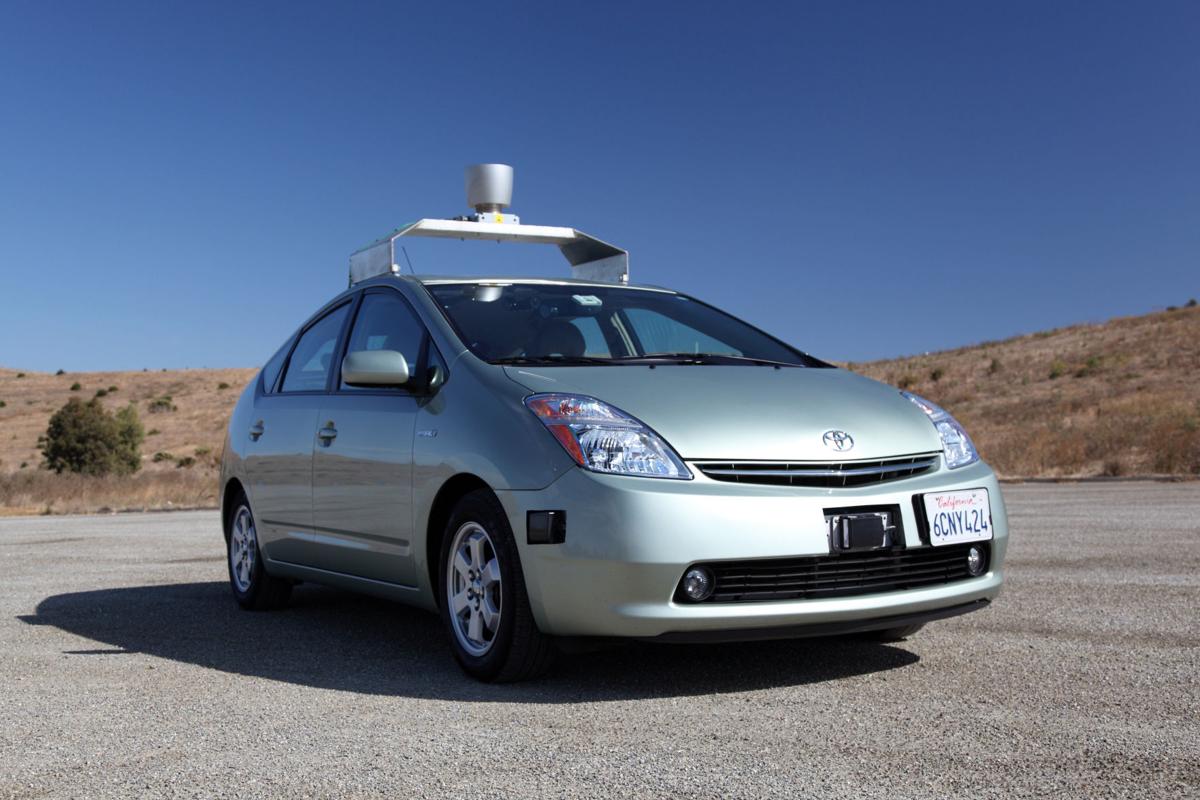PHOENIX — Don’t be shocked when you see the car next to you speeding down the freeway with no one’s hands on the steering wheel.
Or no one behind the wheel at all.
Self-driving cars are already being tested on Arizona’s roads.
And there apparently are no laws that would prohibit manufacturers from marketing them today to consumers. And nothing keeps anyone from buying one and taking it out on the road.
Nor are there specific rules about how they have to be operated and how much actual control — if any — a human needs to have.
With that already occurring, a special panel set up by Gov. Doug Ducey met Monday to try to come up with some new rules of the road.
John Halikowski, director of the Arizona Department of Transportation, said there are a series of rules that need to be addressed. Some almost sound like the lead-in to a joke or a riddle.
“If two driverless vehicles crash into each other, who’s at fault?” Halikowski asked.
Halikowski told committee members Monday there are lots of good reason to promote driverless technology.
He said virtually all of the nearly 35,000 fatal crashes in the country last year were found to be due to driver error.
He said there are other benefits, ranging from less need for downtown parking spaces to ensuring that the elderly and handicapped can get around by themselves.
But that raises other questions.
“Do I need a driver’s license to operate an autonomous vehicle?” Halikowski mused. “Does there have to be an adult in the car if I want to send the kids off to school?”
And then there are some interesting technology questions, like the possibility of the software that operates the vehicle being hacked.
Among those waiting for answers is the state Department of Public Safety.
Maj. William Beck said there are varying degrees of self-driving cars. Aside from current technology like cruise control and braking assistance, he said some vehicles will require someone behind the wheel to pay attention, while others may not.
That, then, goes to the related question of who is actually controlling the vehicle.
Consider the example of an autonomous vehicle clocked at 67 miles per hour in a 55 mph speed zone. Who gets the ticket: the person behind the wheel or the company that manufactured the software telling the vehicle to go that fast?
“That’s why we’re here,” said Beck, a member of the committee.
Sen. Bob Worsley, R-Mesa, who chairs the Senate Transportation Committee, said the issues are even deeper than that.
Consider: The technology is likely to include vehicle-to-vehicle communication so that each can react ahead of a possible accident.
“Is there a way to position cars to minimize damage to little children?” he asked. That, in turn, goes to the programming — and having the computers make split-second decisions of what — or who — to hit.
“There’s all kinds of moral dilemmas that, as we have computers drive our cars we’ve got to resolve,” said Worsley who attended Monday’s meeting.
Kevin Biesty, ADOT’s legislative liaison who also is on the panel, acknowledged that the technology is running ahead of the regulations.
It starts with the fact, he said, that nothing in Arizona law prohibits someone from taking a self-driving car out on the road. But Biesty said that is not a surprise.
“There was a study done by the Transportation Research Board on technologies over the last few centuries, everything from electricity to the railroads to airplanes,” he said. “The technology came out and rules, regulations followed.”
And Biesty said there’s nothing inherently wrong with the lack of Arizona laws to require a human be in actual physical control of an autonomous vehicle.
“I would defer to law enforcement on that,” he said. “But if a vehicle is driving in a lane, obeying a speed limit, not wavering in the lane, not breaking any traffic laws, I don’t know what somebody would be pulled over for.”
That, then, leaves the question of what happens — and who’s responsible — if something goes wrong. Biesty said that’s why the panel includes representatives of the Department of Insurance and will be soliciting input from individual insurance companies.
Waiting for those questions to be answered, Biesty said, is not an option — and not only because Ducey issued an executive order forming the committee with the specific task to “support the testing and operation of self-driving vehicles on public roads within Arizona.”
“The technology is here,” Biesty said. Both Google and General Motors already are testing cars on Arizona streets; rideshare company Uber has partnered with the University of Arizona to develop technology.
In fact, he said, what the committee is charged with doing is not throwing up roadblocks, but seeing what impediments remain.
One concern raised is the possibility that the more technology built into a vehicle, the more the possibility it could be remotely “hijacked” by someone with a computer.
There already are reports of hackers not only breaking into keyless vehicles but being able to actually affect the driving, including turning off the engine while a vehicle is moving.
Worsley, of the Senate Transportation Committee that would be responsible for reviewing and approving any changes to state law, said some of his concerns involve ensuring that there is proper insurance for when something goes wrong.
That could be complicated by the fact there isn’t enough of a record of driverless cars to determine how best to write a policy.





